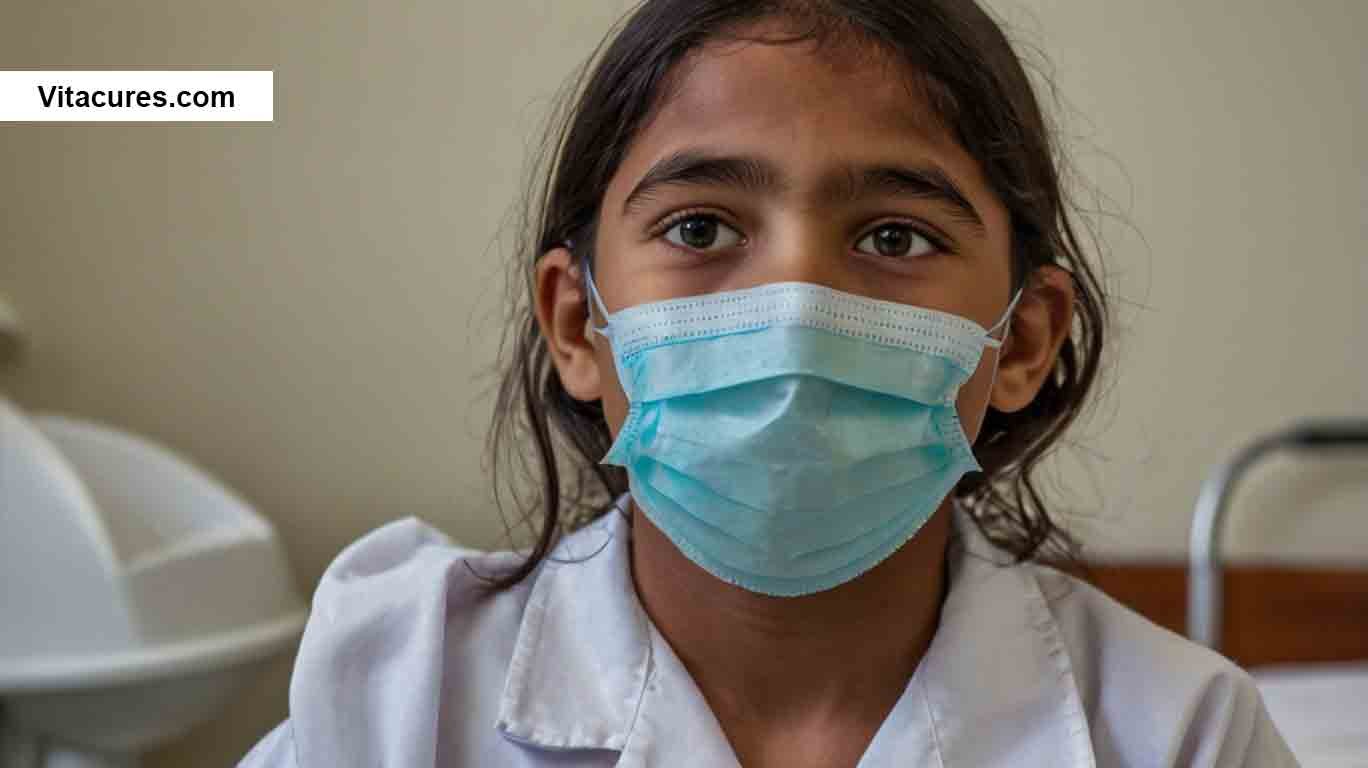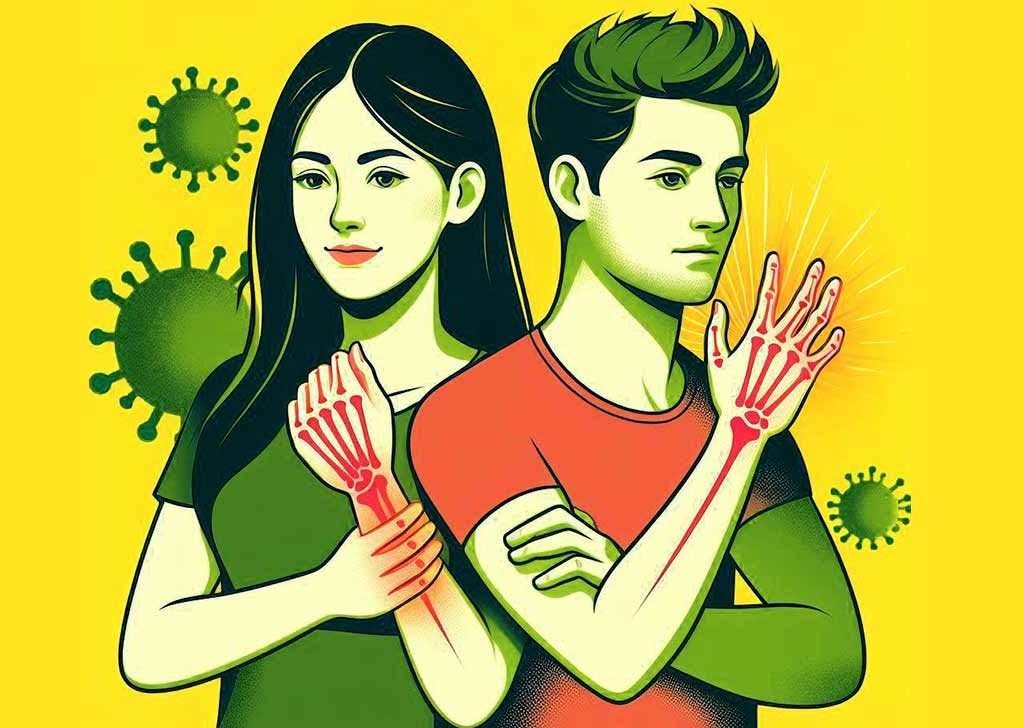How Contagious is RSV? Respiratory Syncytial Virus (RSV) is a common virus that can cause serious illness, especially in young children and the elderly. Knowing how contagious RSV is can help you take the right precautions to protect yourself and your loved ones.
RSV spreads easily through respiratory droplets when an infected person coughs or sneezes. It can also linger on surfaces, making it possible to contract the virus by touching contaminated items. Understanding how contagious RSV is is crucial for preventing outbreaks, particularly in crowded places like schools and daycare centers.
With many people unaware of the risks, it’s important to learn how RSV spreads and what steps you can take to stay healthy. This knowledge can empower you to make informed decisions to reduce the spread of this virus and safeguard your community.

you can check: Fertility Calculator / BMI Calculator / BMR Calculator / Health Risks Calculator
Read More: Ashwagandha Can Make You Horny / Vaginal Pump / Omron Blood Pressure / Vitamin C in Daily / vitamin D deficiency / magic wash laundromat / amphound / pixelxoom / cake ideas
Read More: vaginal depth / Vaginal Pump / Vaginal Cuff / Vaginal Dryness / Tighten Your Vagina / Sore Penis After Sex / Nicotine and Your Sex Drive / Why am I so horny? / Sexual Battery
Read more: 8 oz Chicken Breast / Sea Moss Gel / V8 Energy Drinks / 3 eggs calories / Eating Masago
How Contagious is RSV?
Rsv Transmission Dynamics
Understanding how RSV spreads is essential for prevention. This virus is highly contagious. It can infect people of all ages. Knowing its transmission dynamics can help reduce the risk of infection.
Airborne Vs. Contact Spread
RSV primarily spreads through respiratory droplets. These droplets come from sneezing or coughing. When an infected person breathes, talks, or laughs, tiny droplets can travel through the air.
People nearby can inhale these droplets. This makes RSV airborne. It can also spread through contact. Touching surfaces with the virus can lead to infection. If someone touches their face after contact, they may get sick.
Common surfaces include doorknobs, toys, and tables. Regular cleaning can lower the risk. Wash hands frequently to prevent transmission.
The Role Of Asymptomatic Carriers
Asymptomatic carriers can spread RSV without showing symptoms. This makes it hard to track infections. People might not know they are sick. They can still infect others.
Young children and infants are often affected. They may get sick more easily. Adults can also carry the virus. Awareness of asymptomatic carriers is vital for prevention.
Staying vigilant helps protect vulnerable groups. Keep an eye on symptoms, even in healthy individuals. This awareness can stop the spread of RSV.
Rsv’s Survival On Surfaces
Understanding how RSV survives on surfaces helps prevent its spread. This virus can linger on various materials. Knowing its lifespan on different surfaces is key. It influences how we practice hygiene.
Lifespan On Hard Vs. Soft Surfaces
RSV lasts longer on hard surfaces than on soft ones. Studies show it can survive for several hours on metal or plastic. In contrast, RSV survives only a few minutes on fabric or paper. This difference affects how and where the virus spreads.
For example, RSV can remain active on doorknobs, countertops, and toys. Cleaning these surfaces is crucial to reduce infection risk. Soft surfaces like blankets and clothes need regular washing to keep them safe.
Implications For Hygiene Practices
Hygiene practices must adapt to RSV’s survival. Frequent cleaning of hard surfaces is essential. Use disinfectants that kill viruses effectively. Focus on high-touch areas like light switches and handrails.
Hand hygiene is also vital. Wash hands often, especially after touching surfaces. Use soap and water or hand sanitizer. Avoid touching the face after contact with potentially contaminated surfaces.
Educating everyone about these practices can lower RSV transmission. Make hygiene a family priority. Protecting loved ones starts with simple actions.
Pre-symptomatic Rsv Spread
Understanding the spread of Respiratory Syncytial Virus (RSV) is crucial, especially regarding its pre-symptomatic phase. Many people are unaware that you can be contagious before showing any symptoms. This characteristic makes RSV particularly tricky to contain, as individuals unknowingly spread the virus to others.
Contagiousness Before Symptoms Appear
RSV can be contagious for a day or two before symptoms kick in. This means that you could be spreading the virus while feeling perfectly fine. Consider this: You might interact with friends or family, unaware that you’re passing on a virus that could lead to severe illness in infants and the elderly.
Parents often worry when their children get sick. A friend of mine had a mild cold and didn’t think twice about visiting her newborn nephew. Just a few days later, the baby was hospitalized due to RSV. This situation highlights how critical it is to recognize that even a seemingly harmless cough can pose significant risks.
Impact On Containment Efforts
The ability to transmit RSV before symptoms appear complicates public health efforts. Traditional measures like isolating sick individuals can fall short since many are contagious without realizing it. This is why maintaining hygiene practices, like frequent hand washing and avoiding close contact, is essential.
Have you ever thought about how your actions might affect others, especially vulnerable populations? Staying informed and cautious can help reduce the risk of spreading RSV. It’s not just about protecting yourself; it’s about safeguarding those around you.
In an outbreak situation, even minor lapses in awareness can lead to widespread transmission. Understanding this pre-symptomatic spread is crucial for everyone, especially during peak RSV season. By being proactive, you can play a part in keeping your community safe.
Rsv Contagious Period
RSV, or respiratory syncytial virus, is highly contagious. It spreads easily through respiratory droplets when an infected person coughs or sneezes. You can be contagious a day or two before showing symptoms, making it crucial to practice good hygiene to prevent transmission.
Understanding the contagious period of Respiratory Syncytial Virus (RSV) is crucial, especially for parents and caregivers. Knowing how long RSV can spread helps you take the right precautions to protect yourself and your loved ones. This section will focus on the RSV contagious period, highlighting its duration and the factors that influence it.
Duration Of Individual Infectiousness
Individuals infected with RSV can be contagious for about three to eight days. This duration varies depending on several factors, including the person’s immune response. In young children and infants, the contagious period may extend. They can remain contagious for up to four weeks after the onset of symptoms. Have you ever noticed how quickly a cold can spread in a daycare? RSV works similarly, particularly in crowded environments like schools and daycare centers.
Factors Affecting Contagious Duration
Several factors determine how long you might be contagious with RSV:
- Age: Younger children tend to be contagious longer than adults.
- Overall Health: Individuals with weakened immune systems may spread the virus longer.
- Severity of Symptoms: Those with severe symptoms might be more contagious compared to those with mild symptoms.
If you are a caregiver, keep an eye on symptoms. Understanding these factors can help you assess risk and take necessary actions. Does your child attend preschool? If so, consider keeping them home for a few days if they show symptoms. It not only protects them but also keeps other children safe from the virus. By staying informed and vigilant, you can effectively reduce the risk of RSV spreading in your community.
High-risk Groups For Rsv
RSV affects everyone, but some groups are at higher risk. Understanding these groups can help prevent serious illness. Infants, the elderly, and immunocompromised individuals face greater dangers. Awareness is key to protecting them.
Vulnerability Of Infants And Elderly
Infants are especially vulnerable to RSV. Their immune systems are still developing. Many infants contract RSV by age two. For some, it leads to severe respiratory issues.
The elderly are also at risk. Aging weakens the immune system. Older adults may have other health problems. These factors make RSV more dangerous for them.
Complications For Immunocompromised Individuals
Immunocompromised individuals face severe complications from RSV. Their bodies struggle to fight infections. This group includes those with cancer, HIV, or those on certain medications.
For these individuals, RSV can lead to pneumonia or hospitalization. Protecting them is crucial. Simple hygiene practices can make a big difference.
Rsv Isolation Protocols

RSV, or respiratory syncytial virus, is highly contagious. It spreads easily through respiratory droplets when an infected person coughs or sneezes. Close contact, like hugging or shaking hands, can also transmit the virus, making isolation protocols essential to prevent outbreaks.
RSV (Respiratory Syncytial Virus) poses a significant risk, especially to infants and those with weakened immune systems. Understanding the isolation protocols for RSV can help prevent its spread and protect vulnerable populations. Effective isolation measures are vital in healthcare settings and at home. Below, we’ll explore the specifics of RSV isolation protocols, focusing on contact isolation necessities and the differences between hospital and home isolation.
Contact Isolation Necessities
Contact isolation is crucial for managing RSV. This means that anyone caring for a patient with RSV should take specific precautions. – Hand Hygiene: Wash hands thoroughly before and after contact with the patient. Use soap and water or an alcohol-based hand sanitizer. – Protective Equipment: Wear gloves and gowns when interacting with the infected individual. This reduces the risk of transmitting the virus. – Limit Visitors: Keep the number of visitors to a minimum. This helps prevent potential exposure to RSV. Patients should also be encouraged to cover their mouths when coughing or sneezing, using tissues or their elbows. This simple action can significantly reduce the spread of respiratory droplets.
Hospital Vs. Home Isolation
Understanding the difference between hospital and home isolation is essential for effective RSV management. In a hospital setting, isolation protocols are more stringent. Healthcare professionals are trained to handle infectious diseases and have access to necessary resources. – Dedicated Rooms: Patients with RSV are often placed in dedicated rooms to prevent contact with others. – Continuous Monitoring: Medical staff can monitor symptoms closely and intervene quickly if complications arise. At home, isolation can be challenging but is equally important. – Stay Home: Keep the infected individual at home until they are no longer contagious. This is typically about 5 to 7 days after symptoms begin. – Separate Living Areas: If possible, designate a separate room for the sick person. Limit shared spaces and items to reduce the risk of transmission. You might wonder how you can manage RSV isolation effectively at home. Think about your daily routines and how you can adapt them to ensure safety for everyone in your household. Simple changes can make a big difference in preventing the spread of this virus.
Rsv Symptoms In Adults
Understanding RSV (Respiratory Syncytial Virus) symptoms in adults is crucial for timely intervention and care. While RSV is often associated with children, adults can also experience significant symptoms. Recognizing these symptoms early can help you manage the illness more effectively.
Identifying Initial Signs
RSV symptoms in adults typically start like those of a common cold. You may notice:
- Runny or stuffy nose
- Sore throat
- Cough
- Mild fever (low-grade)
- Headache
- Fatigue
- Decreased appetite
These symptoms can be mild at first. However, they can progress into more severe respiratory issues. You might recall a time when you dismissed a sore throat, only to find yourself struggling to breathe days later. That’s how RSV can sneak up on you.
When To Seek Medical Attention
It’s essential to monitor your symptoms closely. If you experience any of the following, seek medical help:
- Difficulty breathing
- Wheezing
- High fever
Individuals with underlying health conditions, such as heart or lung disease, should be particularly cautious. Are you over 65 or have a weakened immune system? It’s wise to consult your healthcare provider sooner rather than later.
Recognizing RSV symptoms early can make a significant difference in your recovery. Don’t hesitate to reach out for help if something doesn’t feel right. Your health is worth it.
Adults Catching Rsv From Children
Respiratory Syncytial Virus (RSV) can easily spread from children to adults. This virus is highly contagious, especially among young kids. Adults often care for sick children, increasing their risk of infection. Understanding how this transmission occurs is essential for protecting oneself.
Understanding Cross-infection
RSV spreads mainly through respiratory droplets. When an infected child coughs or sneezes, tiny droplets can linger in the air. Adults nearby may inhale these droplets, leading to infection.
Direct contact also plays a role. If an adult shakes hands with a child who has RSV, they can get the virus. Touching surfaces contaminated with the virus is another way for adults to catch RSV.
Symptoms in adults may resemble a cold. They can include a runny nose, cough, and mild fever. Some adults may not realize they have RSV. This can lead to further spread, especially in crowded settings.
Protective Measures For Caregivers
Caregivers should take steps to reduce their risk of RSV. Frequent handwashing is vital. Use soap and water or hand sanitizer, especially after contact with children.
Avoid close contact with sick children. If possible, maintain distance during peak illness. Wearing a mask can also help block respiratory droplets.
Cleaning surfaces regularly is important. Disinfect toys, tables, and other items that children touch. This reduces the chances of the virus spreading.
Staying informed about RSV can help caregivers act quickly. If symptoms appear, seek medical advice. Early action can prevent severe illness.
Prevention Strategies For Rsv
Preventing the spread of Respiratory Syncytial Virus (RSV) is vital. Simple actions can significantly reduce the risk. Focus on hygiene and limiting exposure to those infected. These strategies are essential for protecting yourself and others.
Hand Hygiene And Respiratory Etiquette
Washing hands is one of the best defenses against RSV. Use soap and water for at least 20 seconds. If soap is not available, use hand sanitizer with at least 60% alcohol. Clean hands frequently, especially after touching shared surfaces.
Cough and sneeze into a tissue or your elbow. Avoid using your hands. Dispose of tissues immediately. Teach children the importance of these habits. This reduces the spread of germs effectively.
Reducing Exposure To Infected Individuals
Avoid close contact with people showing RSV symptoms. This includes coughing, sneezing, or runny noses. Keep distance, especially in crowded places.
Limit time in settings where RSV spreads easily. This includes daycare centers and hospitals during RSV season. If possible, stay home when sick to prevent spreading the virus to others.
The Contagiousness Of Rsv In Numbers
The contagiousness of Respiratory Syncytial Virus (RSV) is a crucial aspect to understand, especially during peak seasons when outbreaks are more common. Knowing the numbers behind RSV can help you grasp how easily it spreads and why taking precautions is essential. This section will break down the statistical view of RSV spread and compare it to other viral infections.
Statistical View Of Rsv Spread
RSV is highly contagious, with estimates suggesting that nearly all children will contract the virus by the age of two. In fact, RSV leads to approximately 57,000 hospitalizations among children under five in the United States each year. The numbers are staggering, considering that RSV can also affect adults, especially the elderly and those with weakened immune systems.
- Transmission Rate: An infected person can spread RSV to about 30% of close contacts.
- Incubation Period: Symptoms typically appear 4 to 6 days after exposure, but you can be contagious a day or two before showing symptoms.
- Duration of Contagion: You remain contagious for about 3 to 8 days after symptoms start, but in some cases, it can last longer, especially in infants and those with weakened immune systems.
These statistics emphasize the need for vigilance. Have you ever noticed how quickly a cold can spread in your household? RSV operates in much the same way, making it vital to take preventive measures.
Comparing Rsv To Other Viral Infections
When comparing RSV to other viral infections, its contagiousness is significant. For instance, RSV spreads similarly to influenza and the common cold, but with a higher transmission rate among young children. In contrast, the flu can be spread by roughly 10% to 20% of close contacts.
| Infection | Transmission Rate | Contagious Period |
|---|---|---|
| RSV | 30% of close contacts | 3 to 8 days |
| Influenza | 10% to 20% of close contacts | 1 to 7 days |
| Common Cold | 10% to 20% of close contacts | 1 to 2 weeks |
Understanding these comparisons can help you appreciate why RSV is a public health concern. Have you considered how these statistics apply to your family’s health? Knowing how quickly RSV can spread might make you rethink your social interactions during the RSV season.
Rsv In Community Settings
RSV, or respiratory syncytial virus, spreads easily in community settings. Understanding its transmission helps in controlling outbreaks. This is especially important for schools and public places. Young children and infants are most at risk. They can contract RSV quickly in crowded environments.
Managing Outbreaks In Schools
Schools can be hotspots for RSV outbreaks. Children often play closely and share items. This close contact allows the virus to spread rapidly. Teachers and staff must stay vigilant. They should promote good hygiene practices among students.
Encouraging frequent handwashing is crucial. Teach children to cover their mouths when they cough. Cleaning surfaces and toys often can help too. If an outbreak occurs, schools may need to isolate sick children. Parents should be informed and encouraged to monitor symptoms.
Rsv Transmission In Public Places
Public places also contribute to RSV transmission. Crowded areas like malls and buses can pose risks. The virus travels through respiratory droplets. Someone infected can spread it by coughing or sneezing nearby.
To reduce the spread, practice good hygiene. Wash hands regularly and avoid close contact with sick individuals. Masks can help protect against respiratory illnesses. Staying aware of your surroundings is essential, especially during RSV season.
Vaccination And Rsv
Vaccination plays a key role in controlling RSV. This virus can be very serious, especially for young children and older adults. A vaccine can help protect these vulnerable groups. It can reduce the risk of severe illness and hospital visits. Understanding current developments in RSV vaccines is crucial for prevention.
Current Developments In Rsv Vaccines
Researchers are making progress in developing effective RSV vaccines. Several candidates are in various stages of clinical trials. Some focus on infants, while others target older adults. These vaccines aim to boost the immune response against RSV. Early results show promise in reducing RSV infections.
New technologies are also being explored. For instance, mRNA vaccine platforms are being tested. These methods may lead to quicker vaccine development. Scientists are optimistic about their potential in fighting RSV.
The Role Of Vaccination In Prevention
Vaccination helps reduce the spread of RSV. It protects those at highest risk. When more people are vaccinated, fewer people get infected. This leads to overall lower transmission rates in communities.
Health experts recommend vaccination for high-risk groups. Infants under six months old are particularly vulnerable. Older adults with health issues should also consider vaccination. Protecting these groups can save lives and prevent severe outbreaks.
Public health campaigns promote awareness about RSV vaccination. Increased awareness can lead to higher vaccination rates. This is essential for better community health.
Rsv Misconceptions Debunked
Respiratory Syncytial Virus, or RSV, is a common virus. Many people have misconceptions about how contagious it is. Understanding the facts helps reduce fear and misinformation. Let’s clear up some common myths about RSV.
Common Myths About Rsv
One common myth is that RSV only affects babies. While it is true that infants are at higher risk, adults can get RSV too. Older adults or those with weakened immune systems are especially vulnerable.
Another myth claims that RSV spreads only in winter. RSV can circulate year-round. Outbreaks may be more common in colder months, but cases can happen anytime.
Some believe that once infected, a person cannot get RSV again. This is false. People can catch RSV multiple times throughout their lives. Immunity does not last long after an infection.
Fact-checking Rsv Information
RSV spreads easily through respiratory droplets. This means that coughing and sneezing can transmit the virus. Close contact, like hugging or shaking hands, also spreads it.
People can be contagious before showing symptoms. This early spread complicates prevention efforts. Parents should keep sick children home to protect others.
Good hygiene practices help limit RSV’s spread. Wash hands often and cover coughs and sneezes. These simple actions can make a big difference.
Long-term Effects Of Rsv
Respiratory Syncytial Virus (RSV) can have lasting impacts beyond the initial infection. Some individuals may experience ongoing respiratory issues. Understanding these long-term effects is essential for managing health after RSV.
Rsv And Chronic Respiratory Conditions
RSV can lead to chronic respiratory conditions in some patients. Children are particularly vulnerable. They may develop asthma later in life. Studies suggest a link between severe RSV and asthma. Adults can also suffer from lasting respiratory issues.
Those with pre-existing conditions may see worsened symptoms. RSV can cause lung damage, leading to complications. Chronic bronchitis and emphysema are potential outcomes. Regular monitoring is crucial for those affected.
Follow-up Care Post-infection
After an RSV infection, follow-up care is important. This helps in identifying any long-term effects. Doctors may recommend regular check-ups. Monitoring lung function becomes essential.
Parents should watch for any signs of respiratory distress. Coughing, wheezing, or shortness of breath need attention. Early intervention can prevent complications. Keeping track of symptoms aids in better management.
Supportive care, such as breathing exercises, can help. Nutrition and hydration are also key factors. Overall health plays a significant role in recovery.
Global Incidence Of Rsv
Respiratory syncytial virus (RSV) affects millions every year. It is a leading cause of respiratory infections in children. The virus spreads easily, making it a global health concern. Understanding its incidence helps in better management and prevention.
Rsv Cases Around The World
RSV cases vary across regions. In developing countries, the rates are often higher. These areas face challenges like limited healthcare access. This can lead to increased hospitalizations among infants and young children.
In developed nations, RSV still poses a threat. Seasonal outbreaks occur, particularly in winter months. Many children are hospitalized due to severe symptoms. Adults, especially older ones, can also get infected.
Global health organizations monitor RSV incidence. They aim to improve awareness and prevention strategies. Vaccination and antiviral treatments are critical in managing RSV. Continued research is essential to develop effective vaccines.
Cultural Differences In Rsv Management
Cultural practices influence how RSV is managed worldwide. In some cultures, traditional medicine plays a vital role. Families may rely on home remedies before seeking medical help.
Healthcare systems also differ. In some countries, access to pediatric care is limited. This can affect timely diagnosis and treatment. Early intervention is crucial for better outcomes.
Education and awareness are key. Parents must understand RSV symptoms and risks. Community outreach programs can help in spreading vital information. This can lead to quicker responses and better care.
Conclusion
RSV is highly contagious and spreads easily. Understanding how it transmits helps us protect ourselves and others. Simple actions, like washing hands and avoiding close contact, can reduce the risk. Pay attention to symptoms and seek medical help if needed.
Awareness is key in preventing outbreaks. Stay informed to keep yourself and your loved ones safe. Protecting our community starts with each of us. Stay healthy and vigilant against RSV this season.



